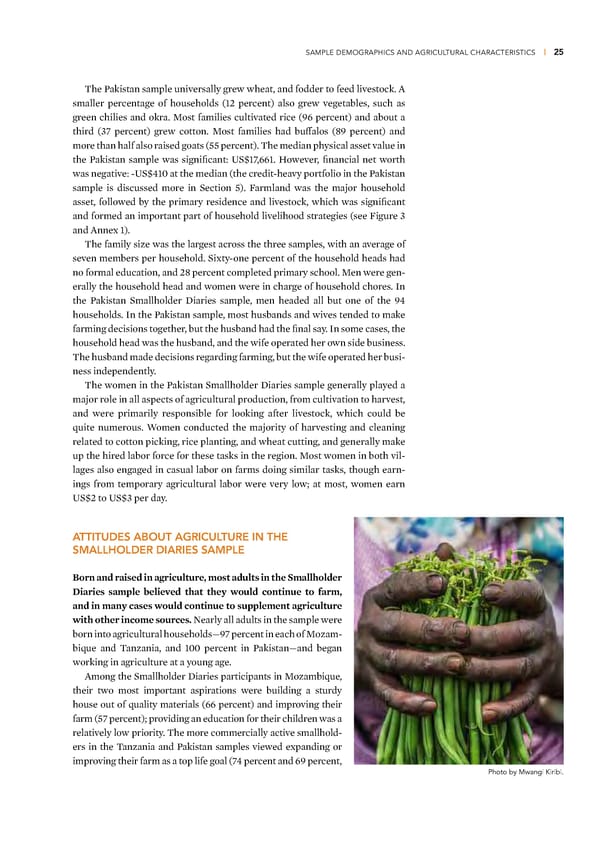SAMPLE DEMOGRAPHICS AND AGRICULTURAL CHARACTERISTICS | 25 Œhe aistan sample universally grew wheat, and fodder to feed livestoc ˆ smaller percentage of households (…‘ percent) also grew vegetables, such as green chilies and ora –ost families cultivated rice (ž¢ percent) and about a third (Ÿ• percent) grew cotton –ost families had buffalos (¡ž percent) and more than half also raised goats (”” percent) Œhe median physical asset value in the aistan sample was significant ©S±…•,¢¢… However, financial net worth was negative -©S±“…’ at the median (the credit-heavy portfolio in the aistan sample is discussed more in Section ”) armland was the ma„or household asset, followed by the primary residence and livestoc, which was significant and formed an important part of household livelihood strategies (see igure Ÿ and ˆnnex …) Œhe family si—e was the largest across the three samples, with an average of seven members per household Sixty-one percent of the household heads had no formal education, and ‘¡ percent completed primary school –en were gen- erally the household head and women were in charge of household chores €n the aistan Smallholder ‰iaries sample, men headed all but one of the ž“ households €n the aistan sample, most husbands and wives tended to mae farming decisions together, but the husband had the final say €n some cases, the household head was the husband, and the wife operated her own side business Œhe husband made decisions regarding farming, but the wife operated her busi- ness independently Œhe women in the aistan Smallholder ‰iaries sample generally played a ma„or role in all aspects of agricultural production, from cultivation to harvest, and were primarily responsible for looing after livestoc, which could be uite numerous ™omen conducted the ma„ority of harvesting and cleaning related to cotton picing, rice planting, and wheat cutting, and generally mae up the hired labor force for these tass in the region –ost women in both vil- lages also engaged in casual labor on farms doing similar tass, though earn- ings from temporary agricultural labor were very low at most, women earn ©S±‘ to ©S±Ÿ per day ATTITUDES ABOUT AGRICULTURE IN THE SMALLHOLDER DIARIES SAMPLE orn and raised in agriculture, most adults in the Smallholder Diaries sample belieed that they would continue to farm, and in many cases would continue to supplement agriculture with other income sources ˜early all adults in the sample were born into agricultural households—ž• percent in each of –o—am- biue and Œan—ania, and …’’ percent in aistan—and began woring in agriculture at a young age ˆmong the Smallholder ‰iaries participants in –o—ambiue, their two most important aspirations were building a sturdy house out of uality materials (¢¢ percent) and improving their farm (”• percent) providing an education for their children was a relatively low priority Œhe more commercially active smallhold- ers in the Œan—ania and aistan samples viewed expanding or improving their farm as a top life goal (•“ percent and ¢ž percent, Photo by Mwangi Kiribi.
 Financial Diaries with Smallholder Families Page 36 Page 38
Financial Diaries with Smallholder Families Page 36 Page 38